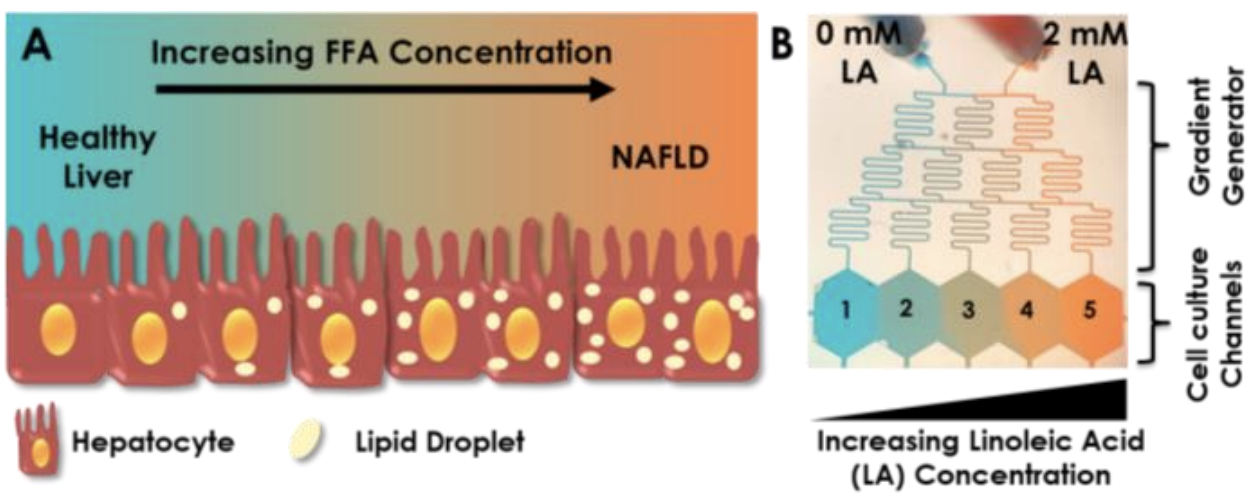2020 Virtual AIChE Annual Meeting
(668e) The Progression and Zonation of Non-Alcoholic Fatty Liver Disease on a Chip
Authors
In this study, we created a patterned model of NAFLD on a chip using a free fatty acid (FFA) gradient of 0 - 2 mM to recapitulate a spectrum of disease conditions in a single continuous liver tissue composed of primary hepatocytes (Fig. 1). We established the NAFLD progression via quantification of intracellular lipid accumulation and transcriptional levels of fatty acid transporters and NAFLD pathogenesis markers across the tissue.
While the cell viability did not vary significantly across the five channels of the device, we observed an increasing lipid accumulation across the length of the cell culture chamber. The change in expression levels of several hepatic markers of lipid metabolism, including fatty acid transporter FATP5, showed a significant increase in channel 5 only. The expression levels of other NAFLD markers, such as acyl-CoA synthetase long chain family member 4 (ACSL4), were also significantly upregulated, mostly in channels 4 and 5, where the hepatocytes were treated with > 1 mM FFA.
We then used this platform to investigate the role of oxygen deprivation on lipid accumulation and found that the difference in lipid accumulation among hepatocytes subjected to an physiologically relevant oxygen gradient of 11.2% - 6.9% decreased gradually upon an increase in FFA supplementation, in agreement with the results of recently published computational and in vivo studies.
This progressive high-throughput disease model can be used for hypothesis testing about NAFLD progression and its heterogeneity, including inflammatory cues, as well as for compound screening and efficacy testing of drugs against progressively severe NAFLD conditions. In addition, while we focus on free fatty acids and oxygen as the drivers of NAFLD, the microfluidic platform presented in this work is extensible to simultaneous use of other drivers.
